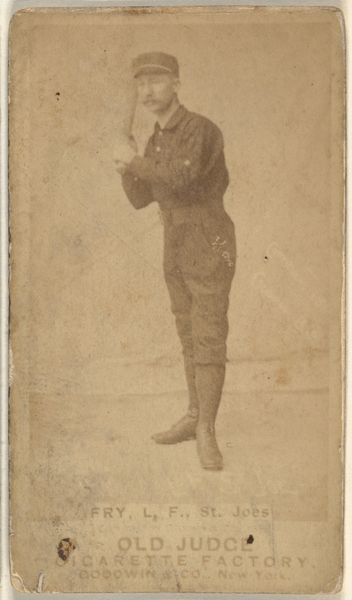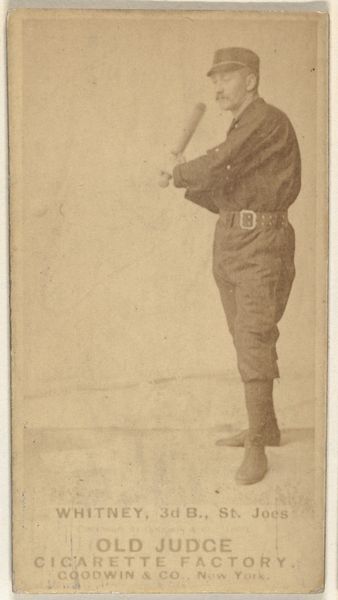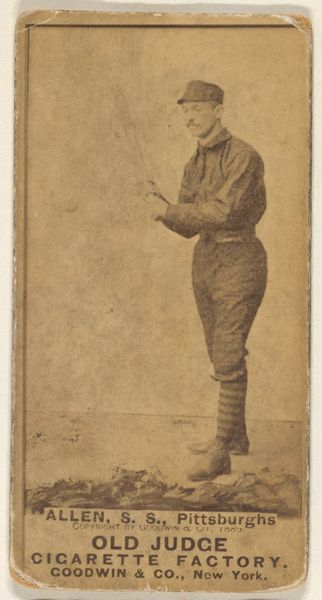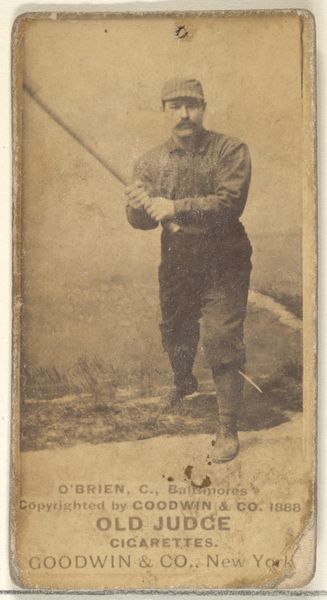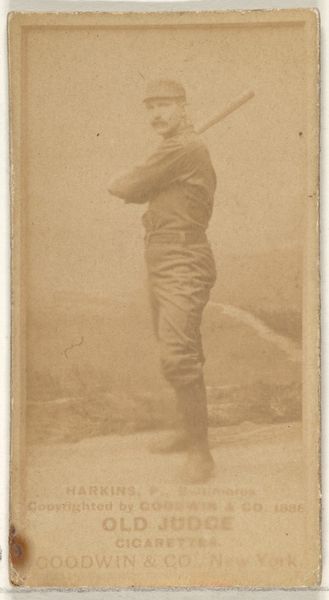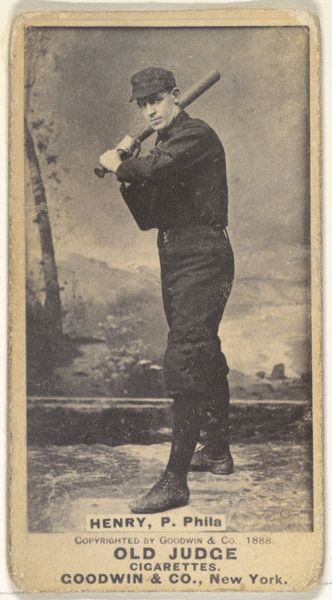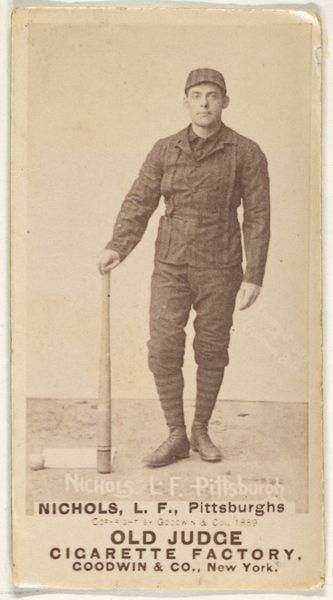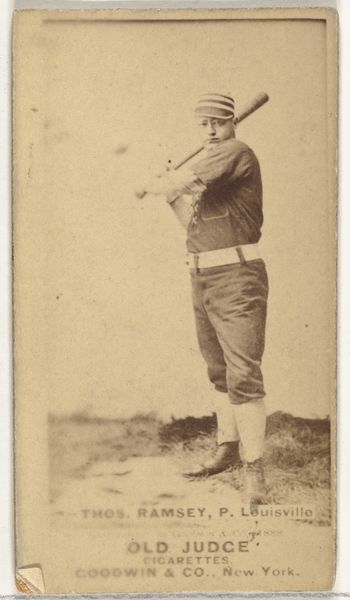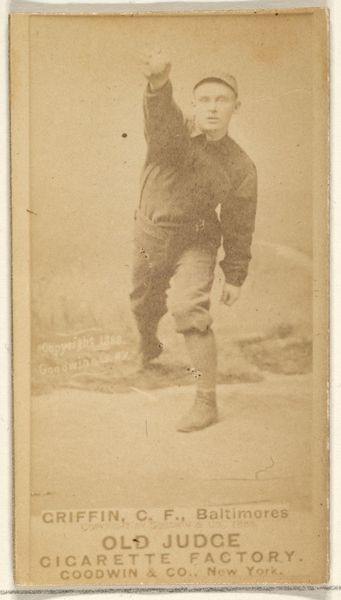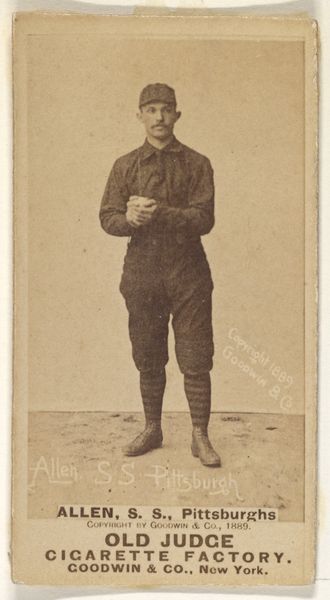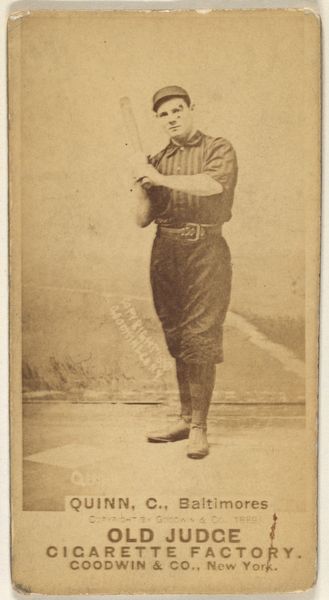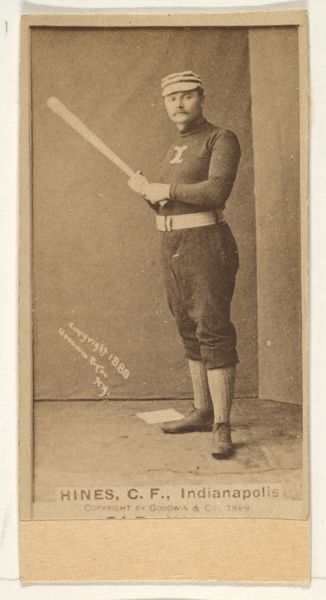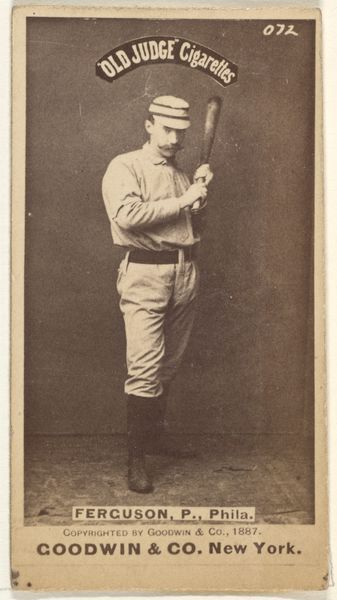
Chuck Lauer, Catcher, Pittsburgh, from the Old Judge series (N172) for Old Judge Cigarettes 1887 - 1890
0:00
0:00
print, photography
#
portrait
# print
#
figuration
#
photography
#
genre-painting
Dimensions: sheet: 2 11/16 x 1 3/8 in. (6.9 x 3.5 cm)
Copyright: Public Domain
Editor: Here we have “Chuck Lauer, Catcher, Pittsburgh,” a baseball card produced by Goodwin & Company sometime between 1887 and 1890 as part of the Old Judge Cigarettes series. It's currently held at the Metropolitan Museum of Art. It's a photographic print, sepia-toned, showing a baseball player. The interesting thing is the size and purpose, originally packaged with cigarettes, seemingly a form of advertising... How should we interpret the significance of its material origins? Curator: The materiality is key here. It’s not just a portrait of an athlete; it’s a commodity circulated within another commodity. This image functioned as part of a broader system of production and consumption. We need to think about the photographic process itself, the labor involved in printing these cards en masse, and how it relates to the marketing of Old Judge Cigarettes. How did the proliferation of photographic images shape perceptions of sports and celebrity culture in that period? Editor: So you're suggesting the card itself is almost more interesting than the image it portrays? Curator: Exactly. Consider the economic forces at play: the rise of mass production, the expansion of consumer culture, and the use of photography as a promotional tool. Who benefitted from this? How did this production process affect workers involved in photography and tobacco industries? Think about the social hierarchies at the time too – who had access to these cards and who didn't? Editor: It definitely puts a new spin on what seems like a simple baseball card. It really highlights the labor and commercial context surrounding its creation and circulation, which adds a richer historical dimension to it. Curator: Right. Focusing on materials and process demystifies the artwork, and anchors the aesthetic experience within a larger web of social relations and economic systems.
Comments
No comments
Be the first to comment and join the conversation on the ultimate creative platform.
